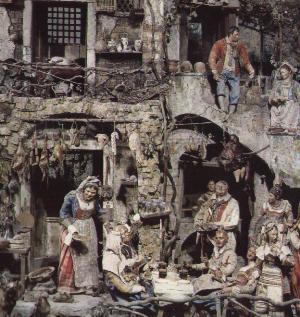|
|
Storia dell'arte - Story of Art
|
|
|
1700
In 1700 the Baroque still was a very popular style, but it changed into the Rococò, that was created in France and obtained a huge success between 1715 and 1760. The Rococò denied the Plasticism of the Baroque and showed dynamic forms and refined lightness. Rome and Venice were the epicentre of the artistic life in 1700. The consequences of the Baroque in this century had been fully expressed in Bernini and Borromini’s works.By the other end Ferdinando Fuga expressed a clear neoclassic influence (Palazzo della Consulta, Facciata di Santa Maria Maggiore). For how to concern the painting there was an interest for a new genre, the landscape. After the elements of Classicism showed by Poussin and Lorrain, the School of “Rovinisti” seemed to be a sign of Romanticism. In Venice there were the greatest events and artists of 1700: Gian Battista Tiepolo started his artistic activity there, using great decorations with great colors and Perspective. (Affreschi di Villa Valmarana, Vicenza). Canaletto made a total renovation of the artistic style in Venice, in his small painting he represented vaste landscapes with a lot of details. Francesco Guardi was first inspired by the same style of Canaletto, but then he started to tell about the usual life of the Bourgeoisie, using precious colors. For how to concern the Architecture, in 1700 Venice was partially rebuilt thanks to Baldassare Longhena. Even Rome was largely rebuilt; some of the most beautiful monuments had been created in this century: Trinità dei Monti (1721), Fontana di Trevi (1733). Across Europe the greatest Cultural Life was in France. From 1600 to 1800 the country represented an interesting, exciting, briliant artistic environment. The Court of Luigi XlV was the centre of the artistic life in France. The most important representatives of this period in France were: François Boucher, Antoine Watteau, Jean Honorè Fragonard, Jean Baptiste-Siméon Chardin. Portraits, Still life and other Paintings all had new and creative colors, which became the the examples of some future styles. In great Britain the neogothic style abtained a lot of success (like it did in 1500). In opposition to the neogothic values developed a neoclassic reaction. The artistic activity of the painters in London increased a lot thanks to: William Hogarth, Thomas Gainsborough, Samuel William Reynolds and Sir Thomas Lawrence. In Germany and Austria developed a particular Rococò Style, related to the artistic Activity of the decorator Giovani Battista Zimmermann. In Spain, Francisco Goya became the greatest artist. He used some aspects of the Spanish tradition, but refused the superficial values of the European Cultural Style. In America the “Colonial” style had the biggest development; the rigid Patterns were the fundamental of the Architecture, that inscreased in 1800.
|
|
|
